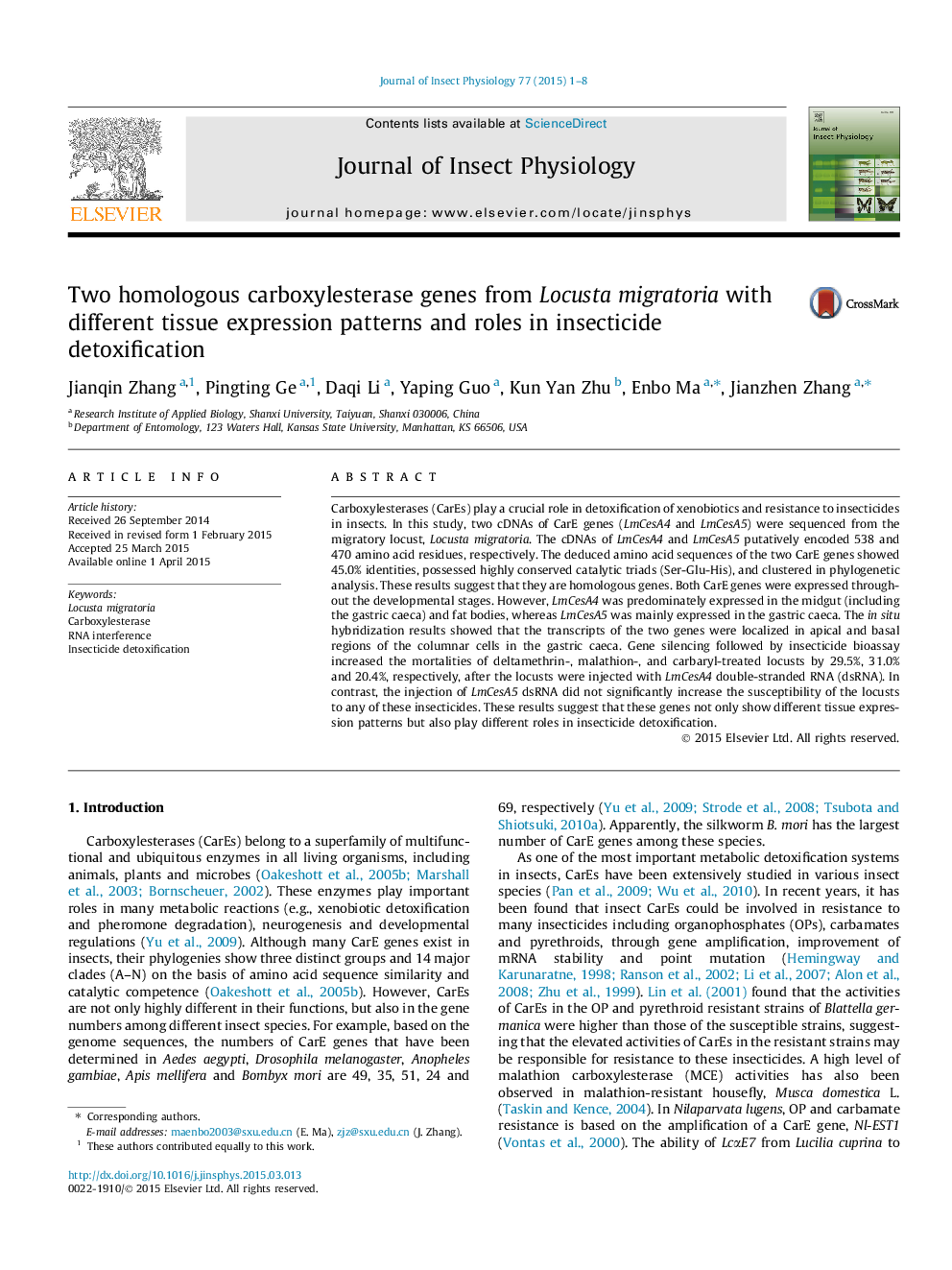| کد مقاله | کد نشریه | سال انتشار | مقاله انگلیسی | نسخه تمام متن |
|---|---|---|---|---|
| 2840359 | 1570993 | 2015 | 8 صفحه PDF | دانلود رایگان |
• Two cDNAs of carboxylesterase (CarE) genes were sequenced from Locusta migratoria.
• The transcripts of both genes were localized in the columnar cells of the gastric caeca.
• LmCesA4 is likely involved in deltamethrin, malathion and carbaryl detoxification.
Carboxylesterases (CarEs) play a crucial role in detoxification of xenobiotics and resistance to insecticides in insects. In this study, two cDNAs of CarE genes (LmCesA4 and LmCesA5) were sequenced from the migratory locust, Locusta migratoria. The cDNAs of LmCesA4 and LmCesA5 putatively encoded 538 and 470 amino acid residues, respectively. The deduced amino acid sequences of the two CarE genes showed 45.0% identities, possessed highly conserved catalytic triads (Ser-Glu-His), and clustered in phylogenetic analysis. These results suggest that they are homologous genes. Both CarE genes were expressed throughout the developmental stages. However, LmCesA4 was predominately expressed in the midgut (including the gastric caeca) and fat bodies, whereas LmCesA5 was mainly expressed in the gastric caeca. The in situ hybridization results showed that the transcripts of the two genes were localized in apical and basal regions of the columnar cells in the gastric caeca. Gene silencing followed by insecticide bioassay increased the mortalities of deltamethrin-, malathion-, and carbaryl-treated locusts by 29.5%, 31.0% and 20.4%, respectively, after the locusts were injected with LmCesA4 double-stranded RNA (dsRNA). In contrast, the injection of LmCesA5 dsRNA did not significantly increase the susceptibility of the locusts to any of these insecticides. These results suggest that these genes not only show different tissue expression patterns but also play different roles in insecticide detoxification.
Figure optionsDownload as PowerPoint slide
Journal: Journal of Insect Physiology - Volume 77, June 2015, Pages 1–8
